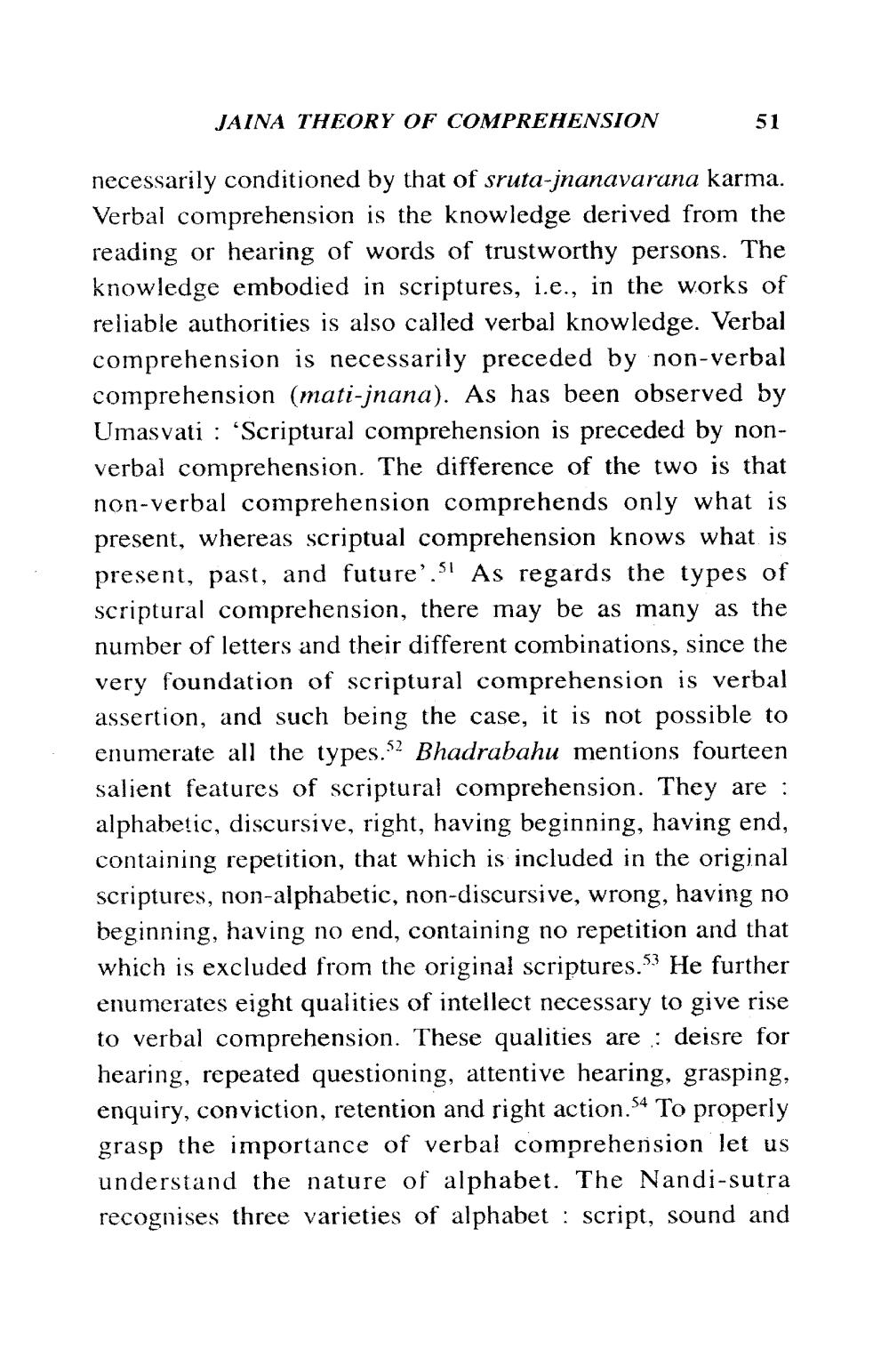________________
JAINA THEORY OF COMPREHENSION
51
necessarily conditioned by that of sruta-jnanavaruna karma. Verbal comprehension is the knowledge derived from the reading or hearing of words of trustworthy persons. The knowledge embodied in scriptures, i.e., in the works of reliable authorities is also called verbal knowledge. Verbal comprehension is necessarily preceded by non-verbal comprehension (mati-jnana). As has been observed by Umasvati : ‘Scriptural comprehension is preceded by nonverbal comprehension. The difference of the two is that non-verbal comprehension comprehends only what is present, whereas scriptual comprehension knows what is present, past, and future’.S! As regards the types of scriptural comprehension, there may be as many as the number of letters and their different combinations, since the very foundation of scriptural comprehension is verbal assertion, and such being the case, it is not possible to enumerate all the types.52 Bhadrabahu mentions fourteen salient features of scriptural comprehension. They are : alphabetic, discursive, right, having beginning, having end, containing repetition, that which is included in the original scriptures, non-alphabetic, non-discursive, wrong, having no beginning, having no end, containing no repetition and that which is excluded from the original scriptures.53 He further enumerates eight qualities of intellect necessary to give rise to verbal comprehension. These qualities are : deisre for hearing, repeated questioning, attentive hearing, grasping, enquiry, conviction, retention and right action.S4 To properly grasp the importance of verbal comprehension let us understand the nature of alphabet. The Nandi-sutra recognises three varieties of alphabet : script, sound and




